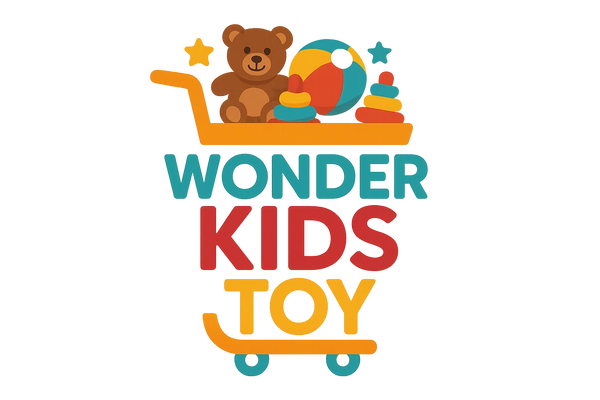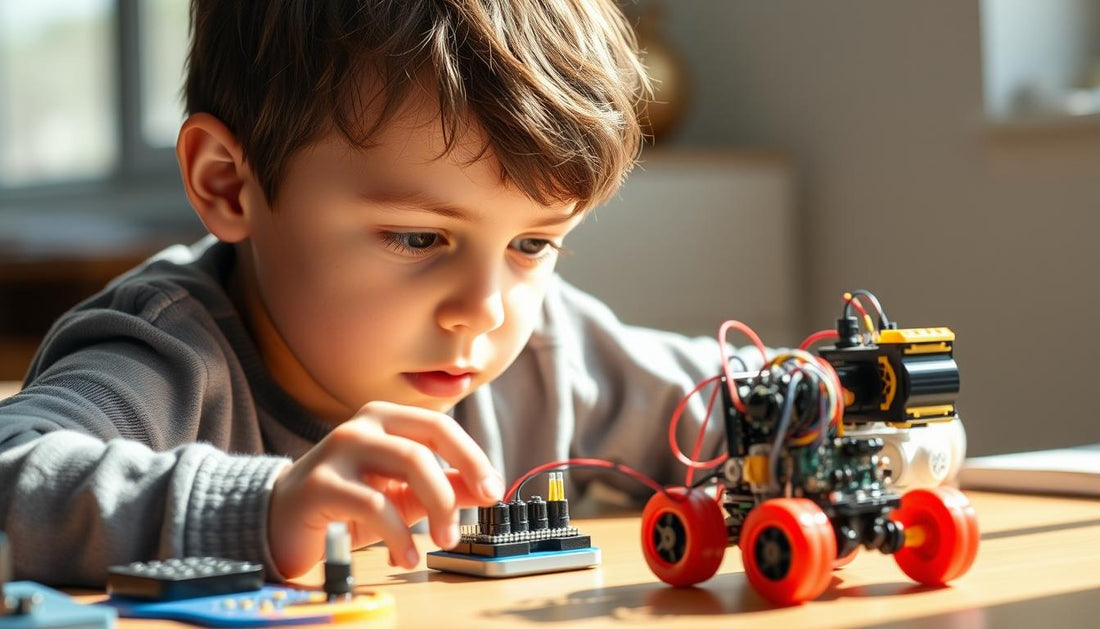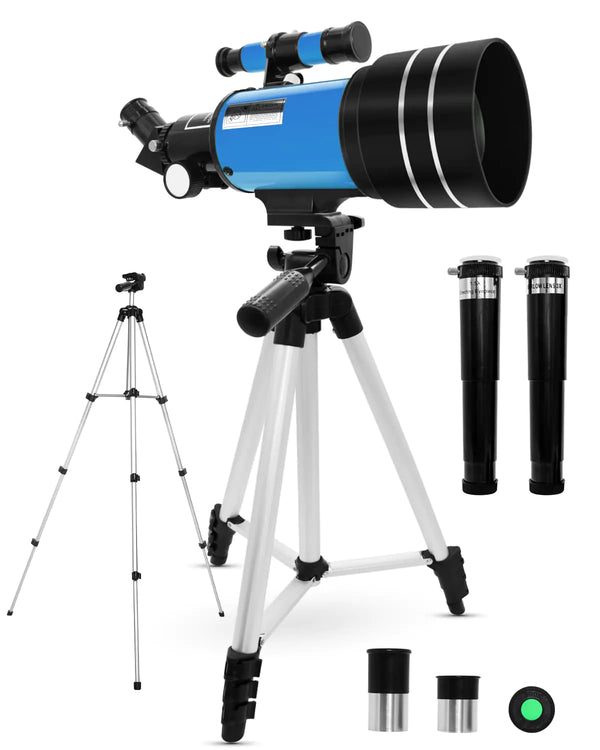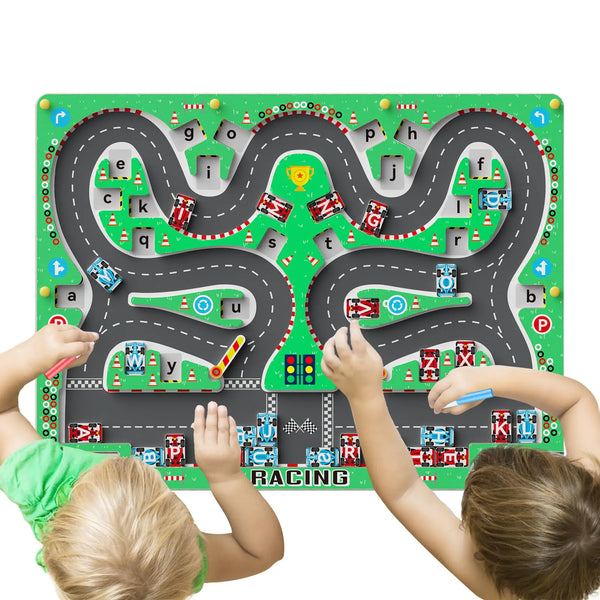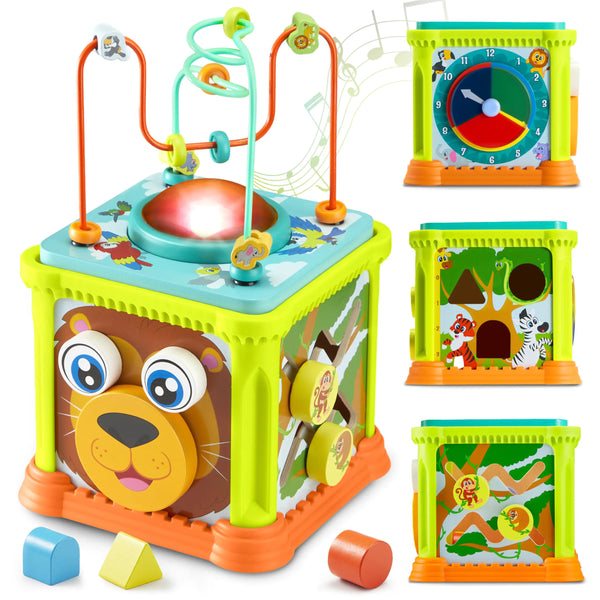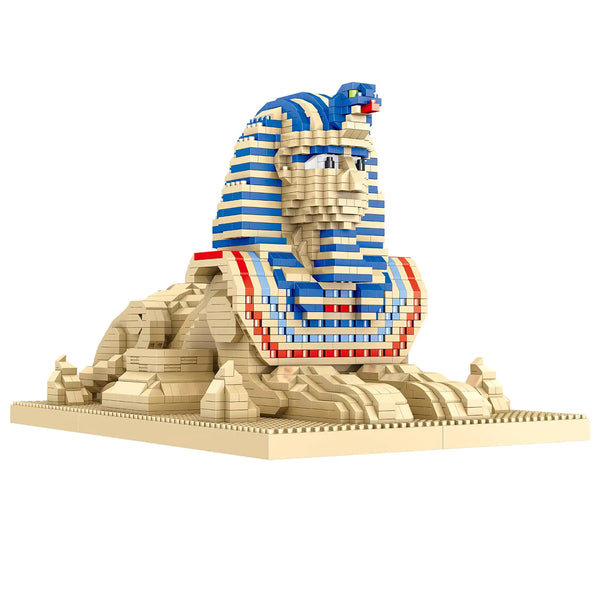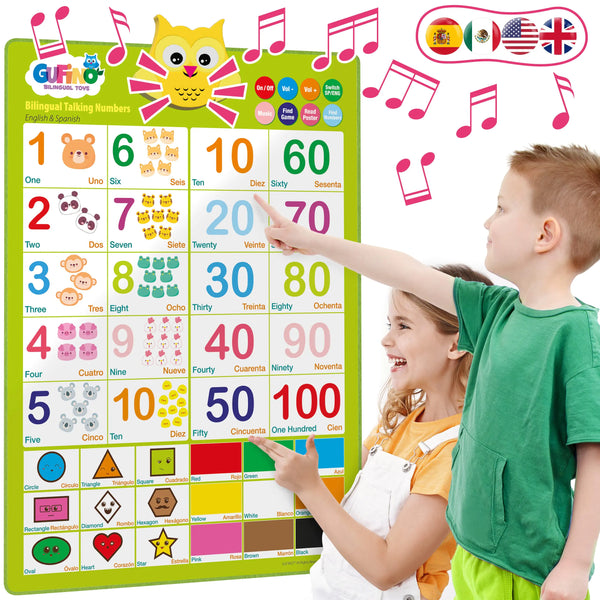When children outgrow simple building blocks and basic construction sets, they're ready to tackle more complex challenges. Advanced engineering toys provide the perfect opportunity for kids to develop critical thinking skills, explore complex STEM concepts, and unleash their creativity in ways that prepare them for future innovation. These sophisticated tools go beyond entertainment—they're launching pads for tomorrow's engineers, programmers, and problem-solvers.
Why Advanced Engineering Toys Matter for Kids

Basic STEM toys introduce fundamental concepts, but advanced engineering toys take learning to new heights. As children grow, their cognitive abilities develop rapidly, allowing them to understand more complex systems and abstract thinking. Advanced engineering toys capitalize on this development by introducing sophisticated concepts through hands-on experiences.
These premium tools offer several key advantages over basic toys:
- Real-world application of scientific principles that children can see in action
- Progressive learning paths that grow with your child's abilities
- Introduction to coding and programming through intuitive interfaces
- Development of patience and persistence through complex problem-solving
- Preparation for future careers in engineering, robotics, and computer science
According to education experts, children who engage with advanced engineering toys develop stronger spatial reasoning, logical thinking, and creative problem-solving abilities—skills that transfer directly to academic success in science and mathematics.
Ready to Elevate Your Child's Learning?
Discover our collection of advanced engineering toys designed to challenge and inspire young minds.
Explore Engineering ToysEntry-Level vs. Advanced Engineering Toys: What's the Difference?

Entry-Level Engineering Toys
- Simple cause-and-effect mechanisms
- Pre-determined outcomes and limited variations
- Focus on basic motor skills and pattern recognition
- Typically suitable for ages 3-7
- Minimal customization options
- Immediate gratification with quick builds
Advanced Engineering Toys
- Complex systems with multiple variables
- Open-ended design possibilities
- Integration of programming and electronics
- Typically suitable for ages 8-14
- Extensive customization and experimentation
- Long-term projects that build persistence
While entry-level toys introduce basic concepts, advanced engineering toys challenge children to think like real engineers—considering multiple variables, testing hypotheses, and refining designs through iteration. This progression mirrors the actual engineering design process used by professionals.
Top Advanced Engineering Toys for Future Innovators
We've selected the most innovative and educational advanced engineering toys that go beyond basic building blocks. Each of these premium options offers sophisticated learning opportunities while remaining engaging and accessible for children ages 8-14.

LEGO Mindstorms Robot Inventor
The LEGO Mindstorms platform takes building to an entirely new level by combining the familiar LEGO system with sophisticated robotics. This premium kit includes:
- Intelligent Hub with 6 input/output ports
- 4 interactive motors for precise movement control
- Color sensor, distance sensor, and force sensor
- 949 LEGO elements for building 5 unique robots
- Drag-and-drop coding interface based on Scratch
- Python programming capability for advanced users
Children learn fundamental robotics concepts including sensor feedback loops, motor control, and conditional programming. The progressive learning path allows kids to start with simple drag-and-drop coding before advancing to text-based programming—mirroring the journey of professional engineers.
Learning outcomes: Robotics fundamentals, programming logic, mechanical engineering, sensor integration, and iterative design thinking.

Snap Circuits Pro SC-500 Electronic Kit
This comprehensive electronics kit introduces children to the fascinating world of electrical engineering through over 500 possible projects. Unlike basic circuit kits, the Pro version includes:
- Over 75 color-coded, real electronic components
- Advanced components including photoresistors and integrated circuits
- AM radio receiver module for building working radios
- Voice recording and playback capabilities
- Variable resistors and capacitors for fine-tuning circuits
- Comprehensive project manual with progressive challenges
The snap-together design eliminates the need for soldering while still teaching authentic electronic principles. Children learn to read circuit diagrams, understand component functions, and troubleshoot complex systems—skills directly applicable to future engineering careers.
Learning outcomes: Electronic circuit design, component functionality, series and parallel circuits, energy transformation, and systematic troubleshooting.

Sphero RVR+ Programmable Robot
The Sphero RVR+ goes beyond typical programmable robots by offering a fully customizable platform that grows with your child's abilities. This advanced robotics platform features:
- All-terrain treads with precision motors
- 9-axis IMU (Inertial Measurement Unit) for accurate navigation
- Color sensor, light sensor, and infrared sensors
- Expandable platform compatible with Raspberry Pi and Arduino
- Multiple programming languages from block-based to JavaScript
- Rechargeable battery with extended run time
What sets RVR+ apart is its expandability—children can add third-party hardware like cameras and additional sensors as their skills advance. This creates a seamless transition from beginner robotics to advanced engineering projects that could even be featured in science fairs or competitions.
Learning outcomes: Robotics programming, sensor integration, hardware expansion, autonomous navigation, and computer science fundamentals.

fischertechnik Education STEM Engineering Kit
Used in engineering schools worldwide, fischertechnik sets represent professional-grade engineering education scaled for younger minds. This comprehensive kit includes:
- Over 700 components for building 30+ models
- Pneumatic system with cylinders and hand valves
- Gear trains, pulleys, and belt drive systems
- Motors with variable speed control
- Structural components for building stable frameworks
- Detailed technical curriculum materials
Unlike simplified building toys, fischertechnik uses components that closely resemble real industrial systems. Children learn authentic mechanical engineering principles as they build working models of cranes, elevators, conveyor systems, and robotic arms.
Learning outcomes: Mechanical engineering principles, pneumatic systems, structural stability, power transmission, and industrial automation concepts.

Arduino Starter Kit for Young Engineers
Arduino introduces children to the world of physical computing—where software and hardware interact to create responsive systems. This comprehensive kit includes:
- Arduino Uno microcontroller board
- Breadboard for prototyping without soldering
- Selection of sensors (light, temperature, motion)
- Output components (LEDs, motors, speakers)
- 170-page project book with 15 progressive projects
- USB cable and power supply
What makes Arduino special is its authentic approach to engineering—children write actual code that controls physical components, just like professional engineers. The C-based programming language introduces fundamental coding concepts while creating tangible results that respond to the environment.
Learning outcomes: Computer programming, electronics integration, input/output systems, sensor calibration, and iterative development.

Thames & Kosmos Structural Engineering: Bridges and Skyscrapers
This advanced civil engineering kit allows children to explore the principles behind the world's most impressive structures. The comprehensive set includes:
- Over 300 building components for 20+ structural models
- Realistic beam, truss, arch, and suspension bridge designs
- Materials for building and testing skyscraper designs
- Force meter for measuring structural strength
- Weights for testing load-bearing capacity
- 56-page engineering manual with real-world examples
Unlike simplified building toys, this kit introduces authentic civil engineering concepts including load distribution, tension, compression, and structural stability. Children learn through experimentation—testing how different designs respond to forces and discovering why certain structures succeed while others fail.
Learning outcomes: Structural engineering principles, architectural design, physics of forces, material properties, and systematic testing methodologies.
The Long-Term Benefits of Advanced Engineering Toys

Cognitive Development
- Enhanced spatial reasoning abilities
- Improved logical and sequential thinking
- Development of abstract problem-solving skills
- Better understanding of cause-and-effect relationships
- Increased attention span and focus
Technical Skills
- Fundamental programming concepts
- Electronics and circuit design principles
- Mechanical engineering fundamentals
- Data analysis and interpretation
- Technical documentation and communication
Character Development
- Persistence through challenging projects
- Confidence in tackling complex problems
- Creativity in finding multiple solutions
- Collaboration skills when working in teams
- Self-directed learning capabilities
Research consistently shows that children who engage with advanced engineering toys develop stronger STEM skills and greater interest in pursuing related careers. These toys create a foundation of hands-on experience that makes abstract concepts in science and mathematics more concrete and accessible.
Getting Started with Advanced Engineering Toys

Transitioning from basic to advanced engineering toys requires some preparation. Here are key tips for parents and educators:
Choosing the Right Toy
- Consider your child's interests - Match the toy to their natural curiosities (robotics, buildings, vehicles, etc.)
- Assess their patience level - Some kits require multiple sessions to complete
- Look for expandability - Choose platforms that can grow with your child's abilities
- Check for curriculum support - Many advanced kits offer online resources and project ideas
- Balance challenge with accessibility - The best toys challenge without frustrating
Supporting the Learning Process
- Allow for experimentation - Mistakes are valuable learning opportunities
- Ask guiding questions rather than providing immediate solutions
- Connect concepts to real-world applications when possible
- Document progress through photos or journals to show growth
- Create a dedicated workspace where projects can remain in progress
Pro Tip: Many advanced engineering toys benefit from parental involvement initially, but aim to gradually step back as your child gains confidence. The goal is to foster independence while providing support when needed.
Investing in Your Child's Future Through Advanced Engineering Play
Advanced engineering toys represent more than just sophisticated playthings—they're investments in your child's future capabilities. In a world increasingly driven by technology and innovation, the skills developed through these toys—critical thinking, problem-solving, technical knowledge, and creative design—provide children with valuable advantages.
The journey from basic building blocks to programmable robots mirrors the path many successful engineers, scientists, and innovators have followed. By providing children with tools that challenge their abilities and expand their understanding, we prepare them not just for potential careers in STEM fields, but for a future where technological literacy is essential in nearly every profession.
"Play is the highest form of research." - Albert Einstein
This quote captures the essence of advanced engineering toys—they transform play into meaningful exploration, experimentation, and discovery. Through structured yet open-ended challenges, children develop the mindset and capabilities that drive innovation.
Ready to Take Your Child's Learning to the Next Level?
Browse our collection of premium engineering toys designed to challenge, engage, and inspire future innovators.
Explore Advanced Engineering ToysFrequently Asked Questions About Advanced Engineering Toys
At what age should my child transition to advanced engineering toys?
Most children are ready for advanced engineering toys around ages 8-10, depending on their experience with basic STEM toys and their interest level. Look for signs that your child is ready for more complex challenges, such as quickly mastering simpler toys, asking detailed questions about how things work, or expressing frustration that current toys are too limiting.
Are advanced engineering toys worth the higher price point?
Advanced engineering toys typically offer significantly more educational value and longevity than basic toys. They often include hundreds of components, support multiple projects, and can be expanded over time. When viewed as educational investments rather than simple playthings, their value becomes more apparent. Many families find that one comprehensive kit provides years of learning opportunities.
How much parental involvement is needed with these advanced toys?
Initial setup and introduction often benefit from parental guidance, especially for younger children. However, well-designed advanced engineering toys include clear instructions and progressive learning paths that allow children to become increasingly independent. Many parents find that their role evolves from instructor to consultant as their child gains confidence and skills.
Can these toys benefit children who aren't naturally interested in STEM subjects?
Absolutely! Advanced engineering toys often serve as gateways to STEM interest because they make abstract concepts tangible and engaging. Children who might not respond to theoretical science or math often become enthusiastic when they can see principles in action through hands-on projects. The key is finding entry points that connect to existing interests—whether that's art, storytelling, sports, or other passions.
How do I know if an engineering toy is truly educational or just marketed that way?
Look for toys that teach authentic concepts rather than simplified approximations. Quality educational engineering toys typically include comprehensive documentation explaining the principles involved, offer progressive challenges rather than one-time builds, and allow for open-ended experimentation beyond the included projects. Reviews from educational professionals and STEM organizations can also provide guidance on a toy's educational value.

